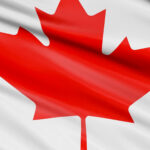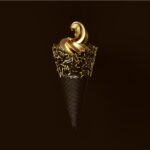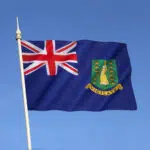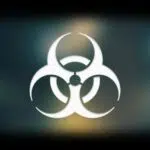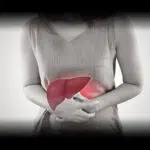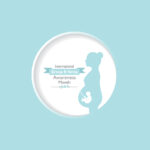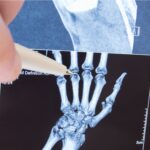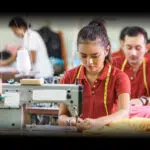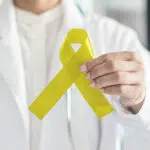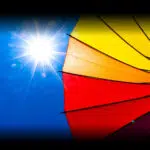U.V. Safety Month is celebrated every July when most of us are gearing up to enjoy the warmer days outside. Picnics, outdoor sports, the pool, the beach, relaxing with a drink in your hand and the breeze in your hair — sound cool? It sure is! What isn’t cool is skin and eye damage caused by excessive exposure to the sun’s U.V. rays.
History of UV Safety Month
U.V. Safety Month is held during summer when most of us spend more time outside making the most of the warmer weather. The longer your exposure, however, the greater your risk of sun damage if you’re unprotected. The sun emits radiation in the form of Ultraviolet or U.V. light, which is classified into three types: U.V.A., U.V.B., and U.V.C. The ozone layer protects the Earth’s stratosphere and blocks the most damaging U.V.C. light, but U.V.B. and U.V.A. light pass through it. U.V.C. radiation can come from artificial sources such as sunlamps or tanning beds.
The Global Solar U.V. Index or U.V.I. describes the level of solar U.V. radiation at the Earth’s surface. The higher the index value, the greater the potential for damage to the skin and eyes.
Radiation from U.V. light is invisible but is always present during the day even when you can’t see or feel the sun. These rays can be harmful to our skin and eyes. Aside from wrinkles and sunburn, exposure is associated with the development of skin cancer. Our eyes can be affected by cataracts, cornea damage, and vision loss if left unprotected in the long term.
The sun is at its peak between 10 am to four pm. Head indoors or under shade during these hours. If you stay outside longer for work or play, sunscreen with a high S.P.F. of at least 30, a broad-brimmed hat, sunglasses, and breathable clothing that covers you up can offer the most protection. U.V. rays can pass through clouds. They also reflect off surfaces like sand, snow, cement, and water. That’s why sun protection is important in any season, all year round.
UV Safety Month timeline
The U.V. index (U.V.I.), is developed in Canada in response to growing concerns about the potential increase of U.V. radiation that causes skin and eye damage.
The U.V.I. is adopted by the United States National Weather Service (N.W.S.) and Environmental Protection Agency (E.P.A.) as well as the World Meteorological Organization (W.M.O.) and World Health Organization (WHO).
The U.V.I. is published as a result of a collaboration between the W.M.O., WHO, United Nations Environment Programme, the International Commission on Non-Ionizing Radiation Protection, and the German Federal Office for Radiation Protection.
The Global Solar U.V.I. is standardized.
The American Academy of Ophthalmology names July U.V. Safety Awareness month.
UV Safety Month FAQs
Is all sun exposure bad?
U.V. rays from the sun stimulate the production of vitamin D in our bodies, which helps them absorb calcium. It also strengthens the immune system. You can have too much of a good thing so limit your exposure and when you do, be smart and protect yourself.
Does a higher S.P.F. mean higher protection against U.V. rays?
The C.D.C recommends the use of a broad-spectrum sunscreen with a minimum of Sun Protection Factor or S.P.F. 15 before heading outside for daily activities. An S.P.F. of 30 to 50 for use when spending longer time outdoors is enough.
Does makeup with S.P.F. work?
Even makeup with a high S.P.F. alone isn’t enough to protect your skin. Apply a standalone sunscreen as part of your daily skin routine.
How to Observe UV Safety Month
Head to the water
Beat the heat with a dip in the pool or a swim in the ocean. An impromptu garden hose shower can be delightful. Just be sure to avoid the sun during peak hours and reapply sunscreen afterward if you’ll be spending more time outdoors.
Wear a fun hat
Sun protection and fashion can go hand in hand. Play with colors, prints, and unexpected shapes. Choose one with a wide, all-around brim for the best coverage.
Propose a toast
Remember kicking back with a drink in hand and the breeze in your hair we mentioned earlier? Do it, but in the shade of course! Gather your friends, some drinks (non-alcoholic or otherwise, they all count), and raise a glass to congratulate yourselves on enjoying the summer sun sensibly.
5 Things To Know To Stay Sun Safe
S.P.F. stands for Sun Protection Factor
The SPF number tells you how long the sun’s U.V. rays would take to darken your skin versus the amount of time without any sunscreen.
Always use a broad-spectrum sunscreen
This means it can protect you from both U.V.A. rays that cause sunburn and U.V.B. rays that cause skin damage like skin aging.
Not all sunglasses are created equal
Wrap-around or oversized styles offer more protection but make sure they block 99% to 100% of U.V. rays.
U.P.F. clothing can be expensive
Clothes labeled with Ultraviolet Protection Factor or U.P.F. provide a level of certainty but common fabrics like cotton and denim that cover most of your body can offer some protection as well.
Some clothing colors can provide U.V. protection
Darker and more vivid colors absorb more UV than pale colors, making them less likely to reach your skin.
Why UV Safety Month is Important
It reminds us that unprotected sun exposure can also affect our eyes
We immediately associate skin cancer as a negative effect of excessive sun exposure, but our eyes can suffer damage too.
It helps us to be mindful of something we take for granted
The sun has been our planet’s source of energy since time began. It brings us light but it can also cause serious harm if we don’t protect ourselves.
It highlights that sun protection is important all year round
Summer is not the only time we need sunscreen or sunglasses. We need to protect our skin and eyes from sun damage every day of the year.
UV Safety Month dates
| Year | Date | Day |
|---|---|---|
| 2025 | July 1 | Tuesday |
| 2026 | July 1 | Wednesday |
| 2027 | July 1 | Thursday |
| 2028 | July 1 | Saturday |
| 2029 | July 1 | Sunday |







